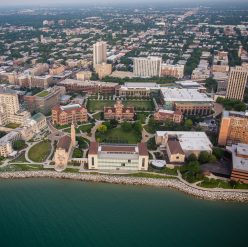The Rev. Michael J. Garanzini, S.J.: 2001-2015
Rev. Michael J. Garanzini, S.J. became Loyola’s twenty-third president in 2001. In 2010, Garanzini started student retreats, which are now a major part of students’ experience at Loyola. [60] Under Garanzini, Loyola stabilized financially and significant campus construction started for the first time since Baumhart’s presidency. He also is credited with launching Loyola’s Vietnam and Beijing study abroad campuses.
The efforts undertaken by Garanzini to change the Lake Shore Campus’s physical appearance are what most students, faculty, and visitors see today. In the early 2000s, Lewis, Bremner, and Stebler Halls were all demolished. The Quinlan Life Sciences Building that began construction under Piderit was completed in 2004. By 2005, all former Jesuit Residences along Loyola Avenue on the campus side were demolished, leaving the Arrupe House as the only Jesuit Residence on the north side of campus. Cuneo Hall (opened in 2012) replaced Damen Hall, which was demolished in 2010. Cuneo is architecturally-designed to match Cudahy Science and Dumbach Halls, two of the first buildings on the Lake Shore Campus. The Jesuit Residence, on the East Quad since 1922, was also demolished in 2007. Just to the east of the Jesuit Residence’s location, the Klarcheck Information Commons was constructed on Lake Michigan in 2008. Both Cuneo Hall and the Information Commons are LEED certified buildings, gold and silver respectively. The Norville Center for Intercollegiate Athletics opened in 2011, housing athletic facilities for Loyola’s NCAA athletes. The Damen Student Center, which was built around Halas, and in the place of the Alumni Gym (removed in 2011), was completed in 2014 and is also silver-LEED certified. The Student Center houses student organization offices, a dining hall, atrium, movie theater, and food court. In addition, the track and field in front of Mertz was converted to the West Quad.
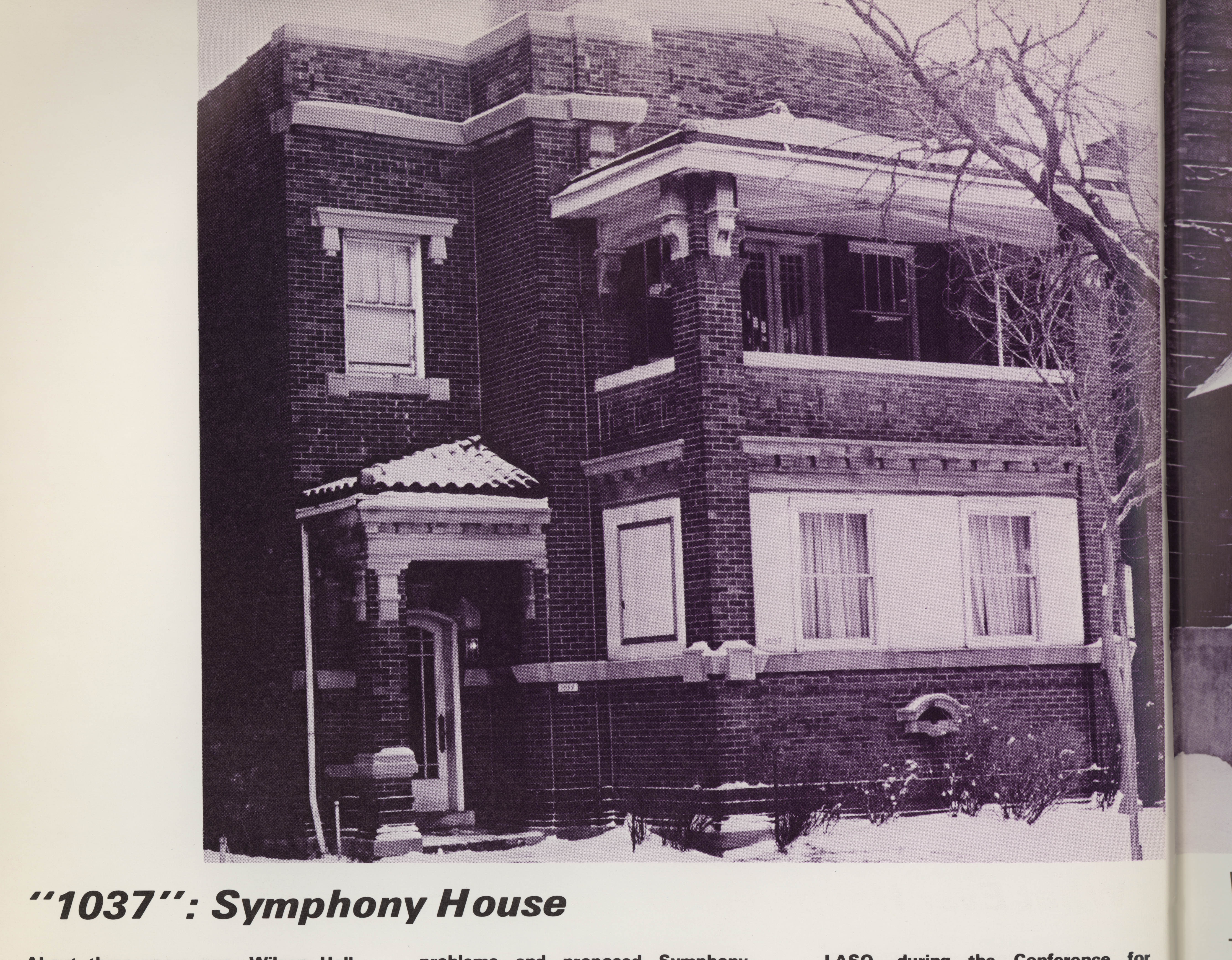

The Symphony House, which stood next to Campus Towers on Loyola Avenue, held space for the Loyola radio station (WLUC), yearbook, literary magazine, and Afro-American Society during the 1970s. It was demolished by 1991 to form the Quin Quadrangle, now the Sean Earl Field. [61]
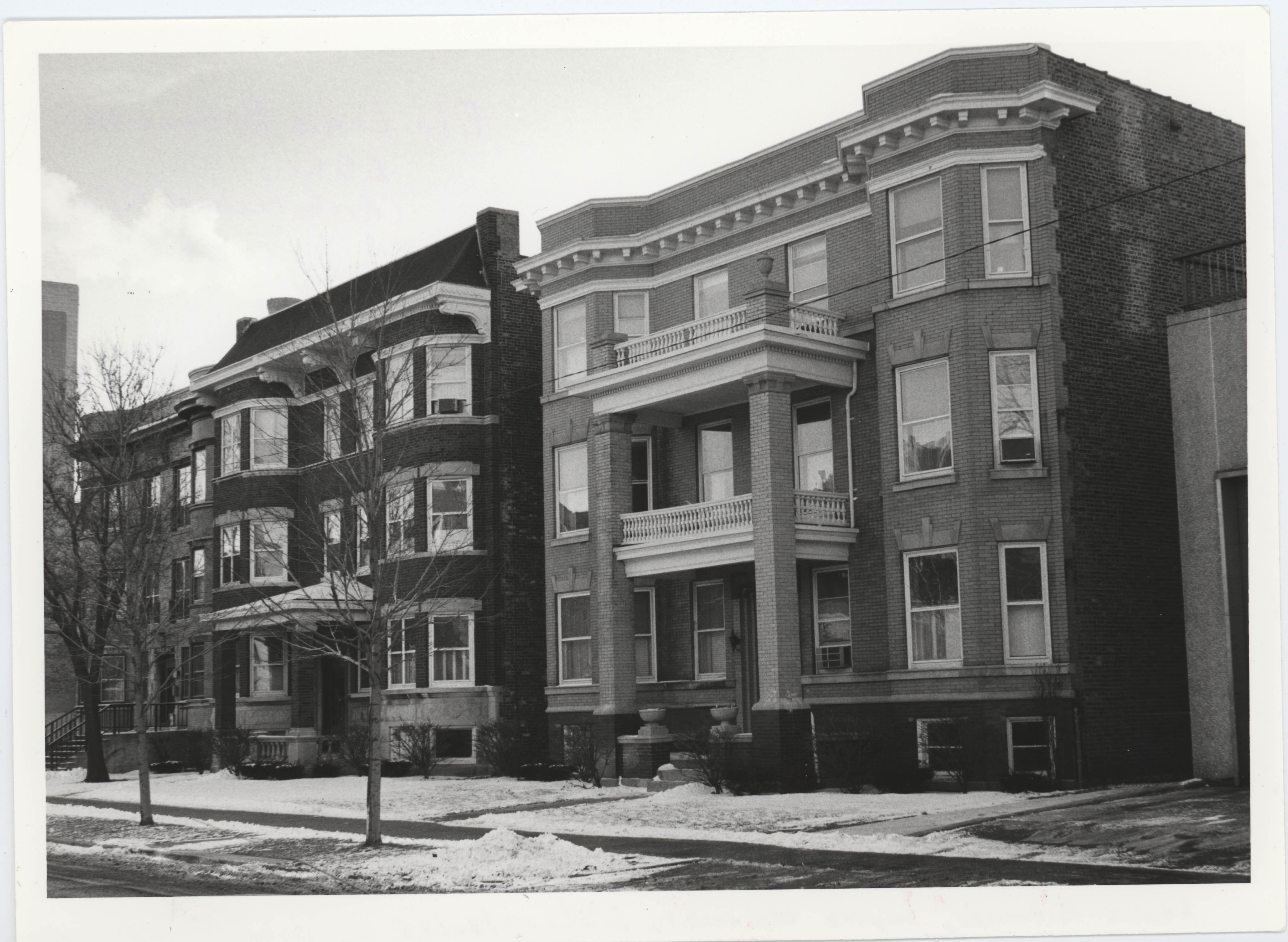

Pictured are Bremner (right) and Lewis (left) Halls on Loyola Avenue, directly next to Mertz Hall. Both were Jesuit Residences, and both were demolished by the early 2000s. [62]
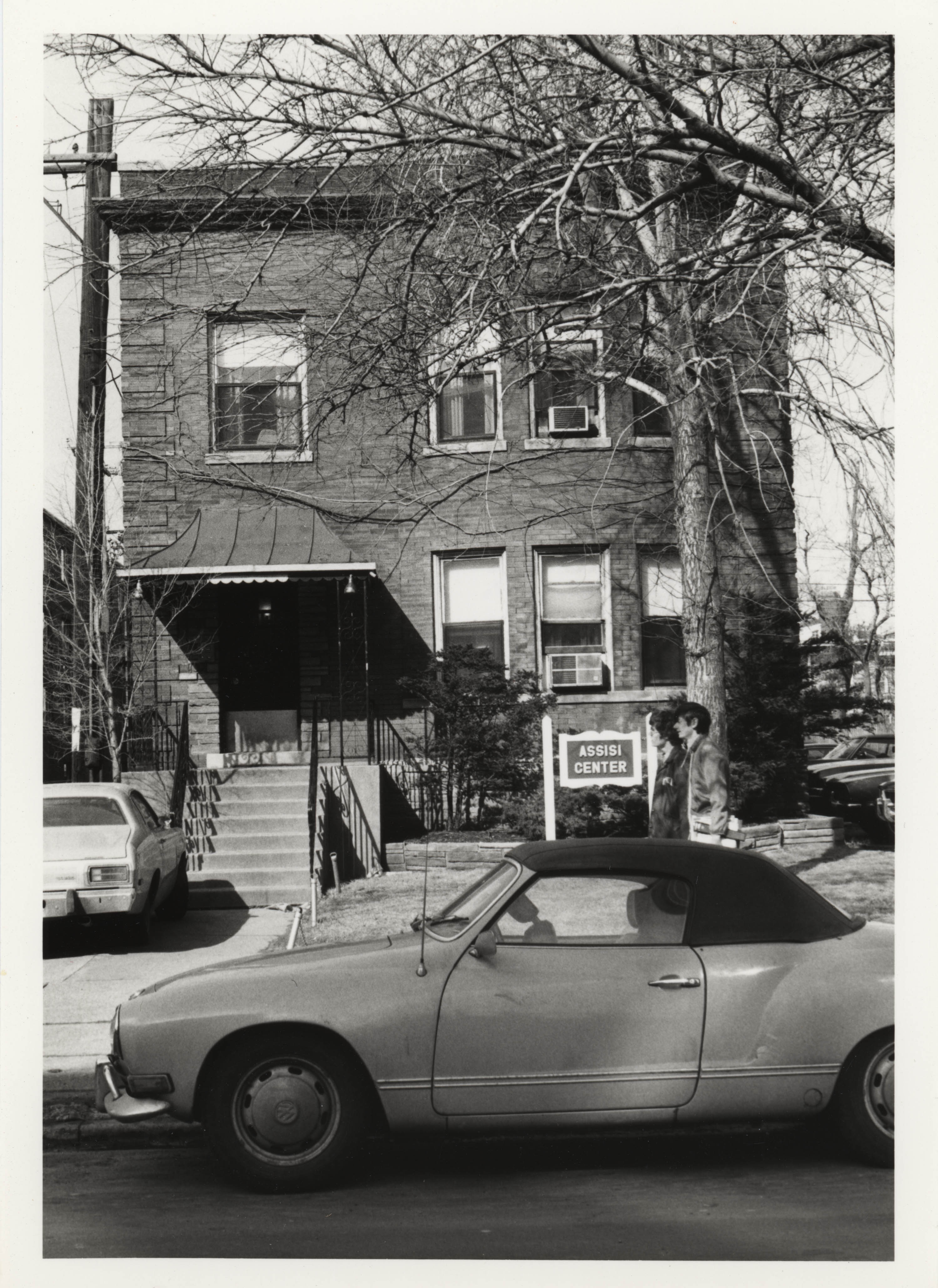

The Assisi Center, which took over the Coffee House in 1972, was campus ministry’s headquarters. It was demolished in the summer of 2004. [63, 64]
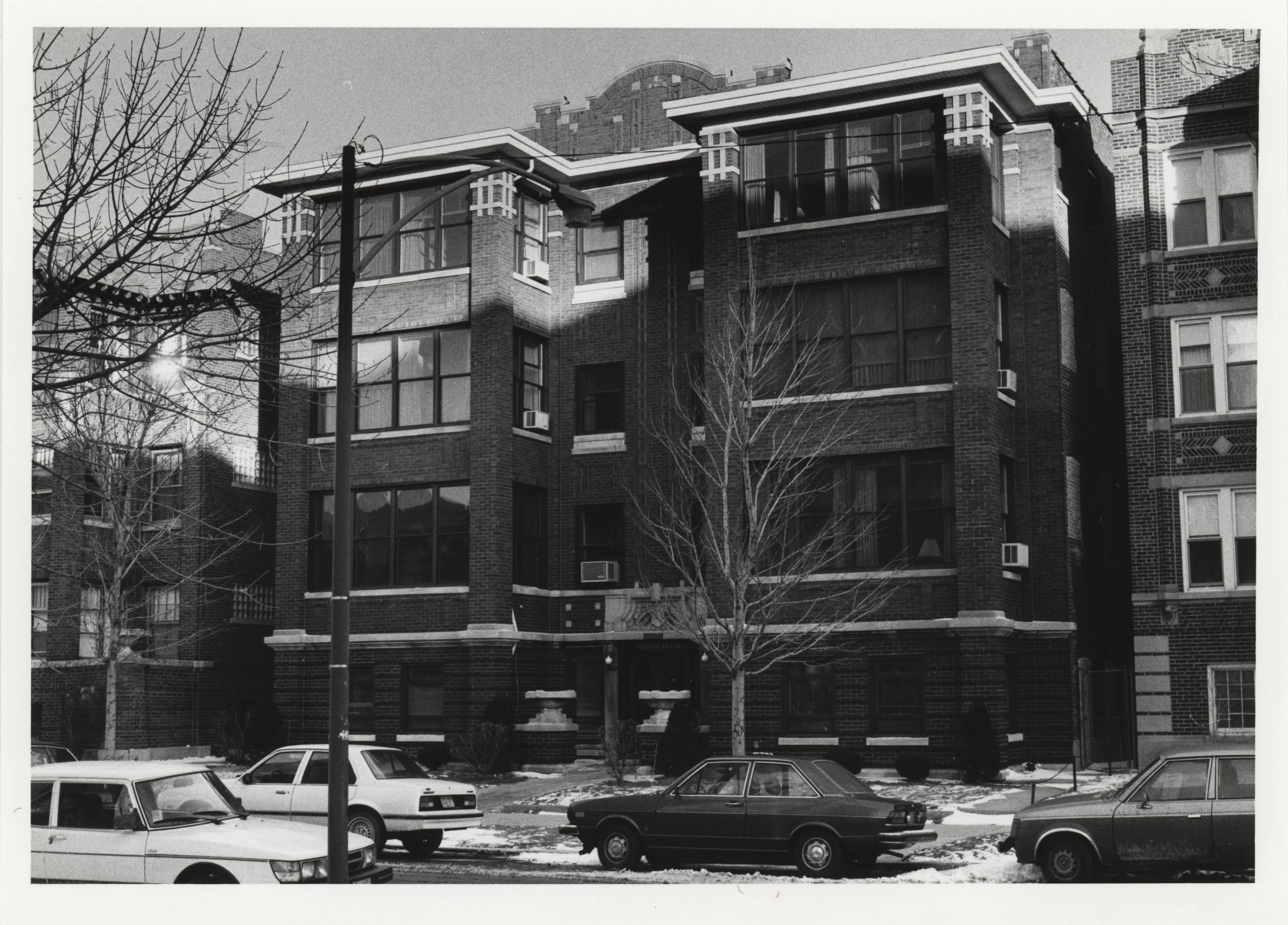

The Arrupe House, pictured here in 1985, is one of the few remaining Jesuit residences on Loyola’s campus. [65]
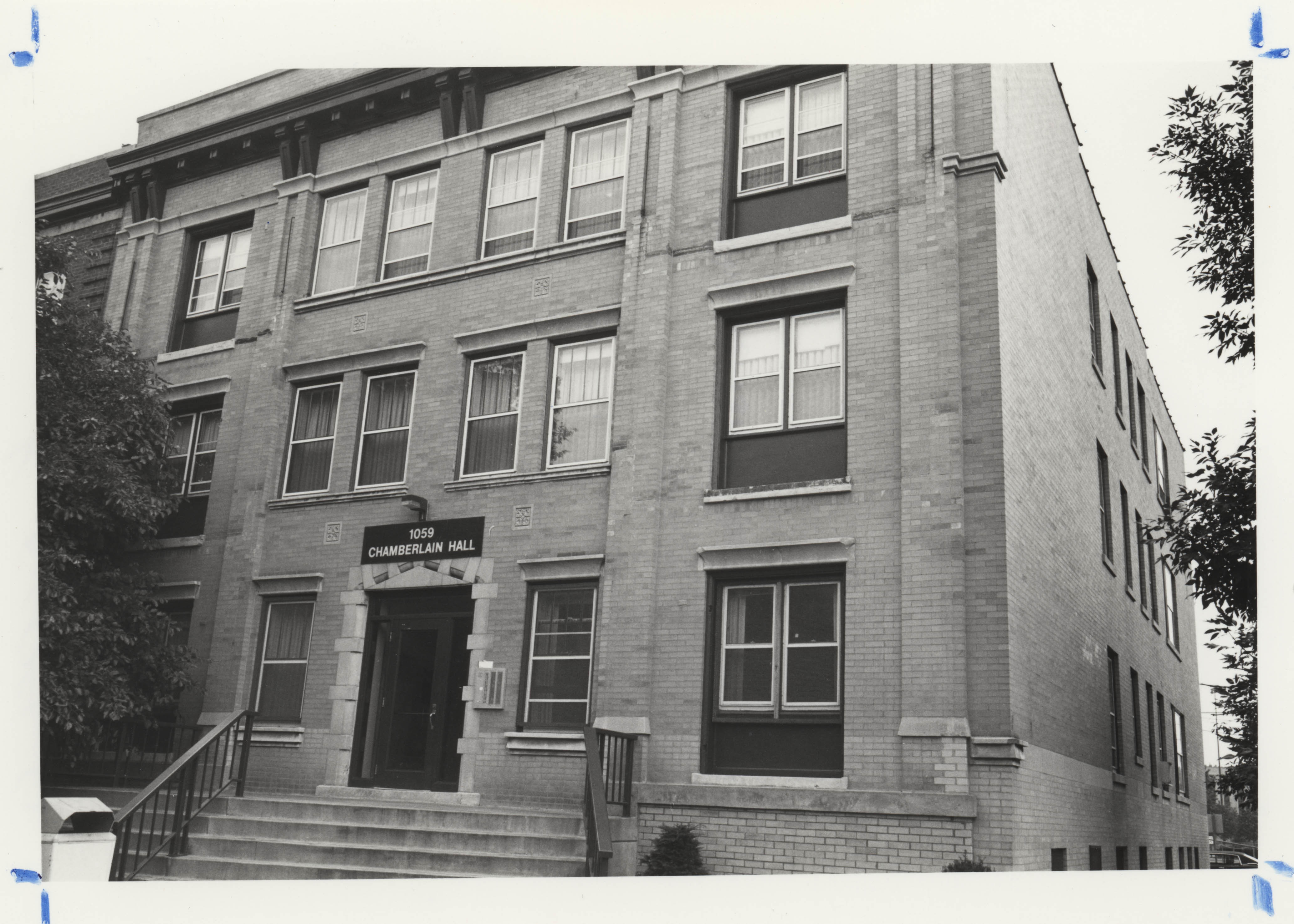

Chamberlain Hall opened as a women’s residence hall in 1962, and was closed in 1991 for demolition. [66, 67]
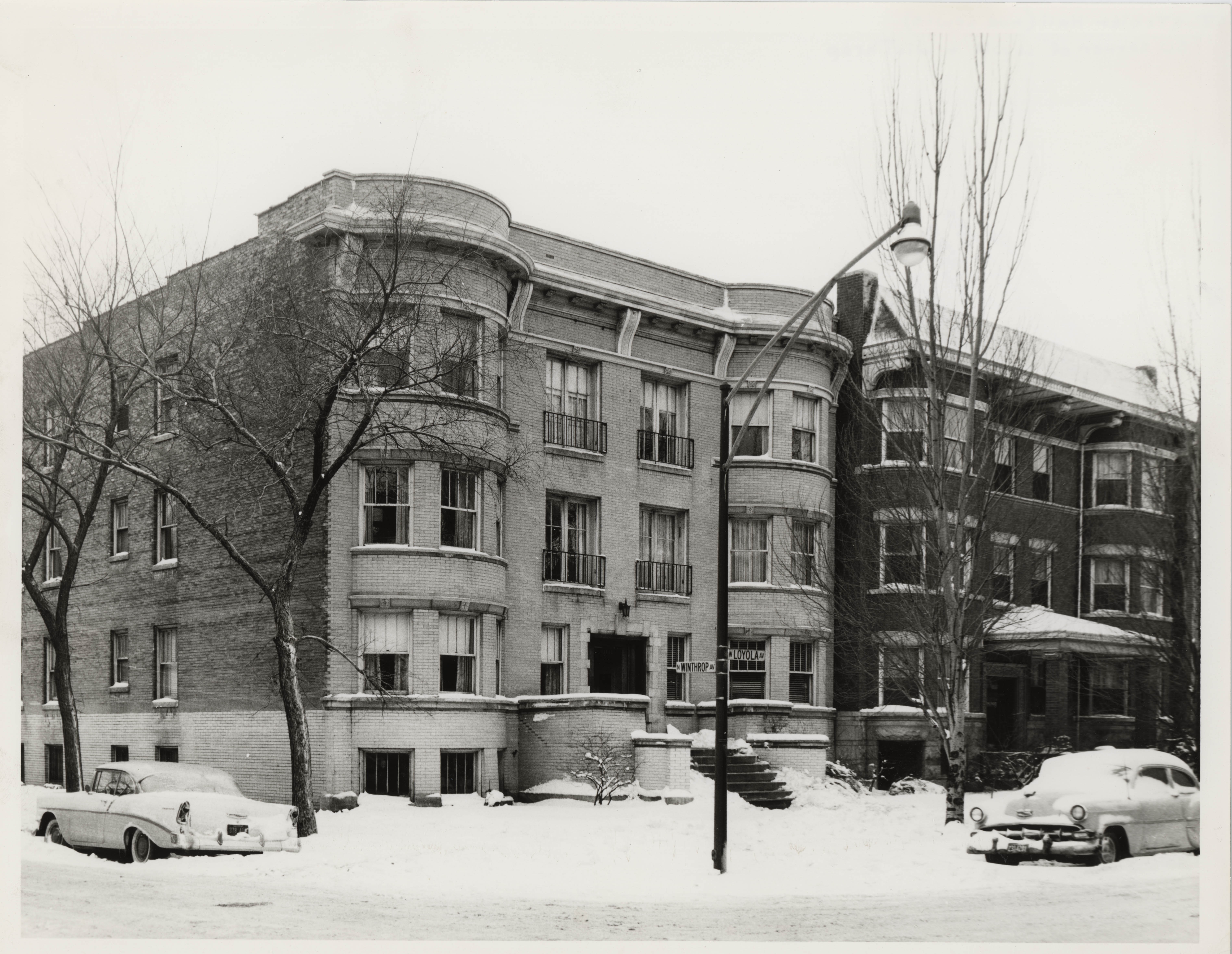

Stebler (left) and Lewis (right) Halls are two more examples of Loyola Avenue residences. Stebler opened as a women’s dorm in 1960. Both were demolished in the early 2000s. [68, 69]
Rev. Garanzini resigned as president in 2015, and Dr. Jo Ann Rooney followed him as Loyola’s first layperson and woman president. From 1909 to 2015, Loyola’s campus experienced a significant transformation in its physical landscape. Some of these changes conformed to the architect’s rendering from the 1920s, such as the Jesuit Residence and Alumni Gym. However, during the mid-twentieth century, Brutalism became a dominant architecture style on campus. With the construction of Cuneo Hall, the influence of the original campus buildings’ architecture returned. The Lake Shore Campus according to the rendering was never accomplished according to plan, but what exists today is a campus that embodies its historical timeline in each building.
